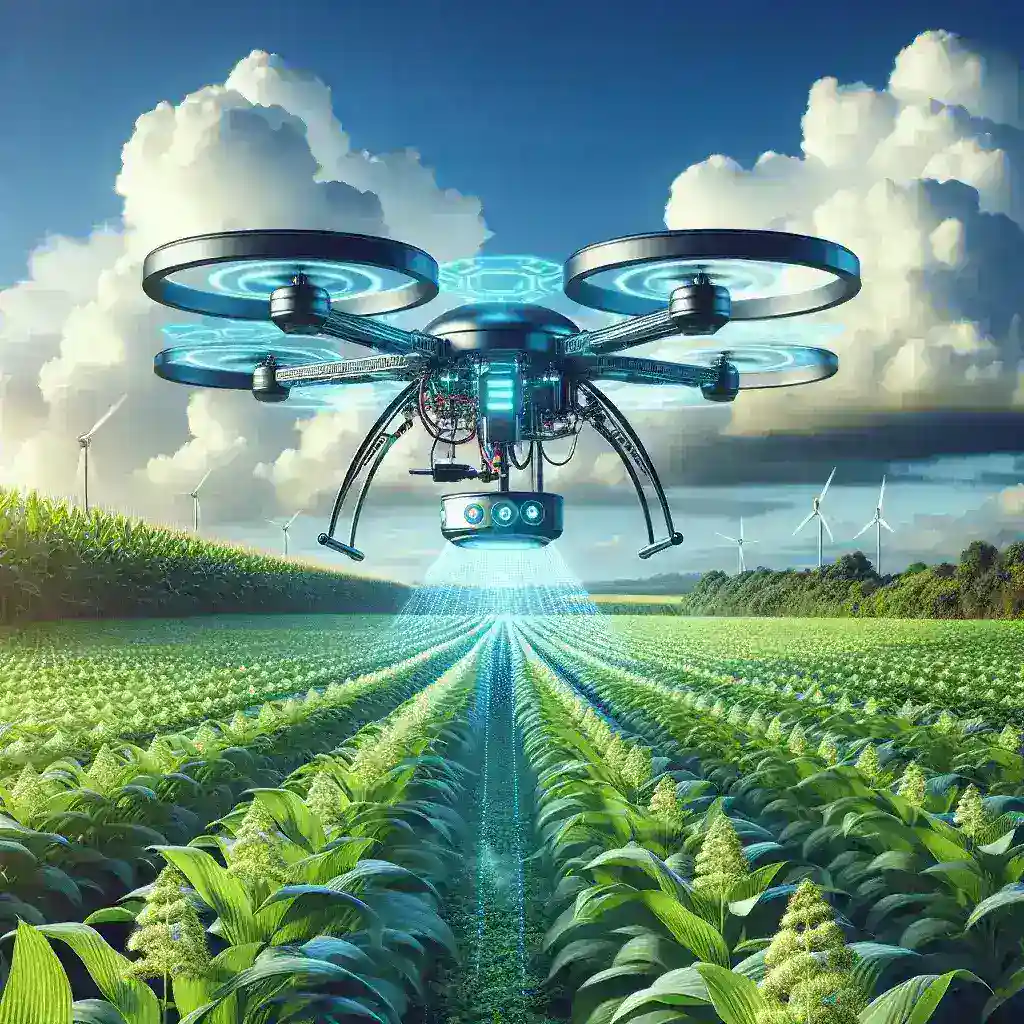Introduction
In an era where technology and agriculture are merging to create more efficient farming practices, DJI has taken a significant leap forward with the launch of their new agriculture drone equipped with real-time pest detection capabilities. This innovative drone promises to transform how farmers monitor crops and manage pests, ultimately leading to healthier yields and more sustainable farming practices.
The Evolution of Agricultural Technology
As the agricultural sector faces increasing challenges due to climate change, population growth, and the demand for sustainable practices, the adoption of technology is becoming essential. The integration of drones in agriculture is not new; however, DJI’s latest offering sets a new benchmark in pest management. Understanding the historical context of agricultural technology provides insight into how far we’ve come and where we’re headed.
Historical Context
- Early Innovations: The use of basic tools and mechanization has been a staple in farming for centuries. From the plow to the tractor, each advancement has aimed to make farming more efficient.
- Introduction of Drones: Drones began to emerge in agriculture around the early 2010s, primarily used for aerial imagery and surveying.
- Data-Driven Decisions: With the advent of big data and IoT technology, farmers have started relying on analytics to make informed decisions.
Features of DJI’s New Agriculture Drone
The new DJI agriculture drone is equipped with cutting-edge features that enhance its functionality for modern farming.
1. Real-Time Pest Detection
One of the standout features of this drone is its ability to detect pests in real-time. Utilizing advanced imaging technology and AI algorithms, the drone can identify pest infestations and alert farmers, allowing for immediate intervention. This proactive approach reduces crop loss and minimizes the use of pesticides, promoting sustainability.
2. High-Resolution Imaging
The drone is equipped with high-resolution cameras that provide detailed imagery of the fields. This feature allows farmers to monitor crop health, assess growth stages, and identify areas requiring attention.
3. Automated Flight Patterns
DJI’s drone also boasts automated flight patterns, enabling it to cover large areas quickly and efficiently. Farmers can set specific routes, ensuring comprehensive coverage of their fields.
4. User-Friendly Interface
The accompanying mobile application is designed for ease of use, allowing farmers to control the drone with minimal technical knowledge. The app provides real-time data analytics, enabling farmers to make quick decisions.
The Impact on Pest Management
With the introduction of DJI’s agriculture drone, pest management is set to undergo a significant transformation.
Benefits of Real-Time Pest Detection
- Early Intervention: The ability to detect pests early means that farmers can take action before infestations spread, leading to healthier crops.
- Reduced Pesticide Use: By accurately identifying pest locations, farmers can target treatments more effectively, reducing the overall use of chemicals.
- Cost Efficiency: Early detection and targeted action can save farmers money in the long run by preventing crop loss.
Challenges and Considerations
While the benefits of DJI’s new drone are substantial, there are challenges and considerations that farmers must keep in mind.
1. Cost of Investment
The initial investment in a drone can be significant. Farmers must weigh the costs against potential savings and increased yields.
2. Training and Integration
Farmers may need training to effectively use the drone and integrate it into their existing practices. This learning curve can deter some from adopting the technology.
3. Data Privacy Concerns
As with any technology that collects data, there are concerns regarding privacy and how that data is used. Farmers should be aware of data protection regulations and practices.
Future Predictions for Agricultural Drones
The future of agricultural drones, particularly those equipped with real-time pest detection capabilities, is promising. As technology advances, we can expect to see improvements in several areas:
1. Enhanced AI and Machine Learning
Future drones will likely incorporate even more advanced AI, enabling them to not only detect pests but also predict their movements based on environmental factors.
2. Greater Accessibility
As technology becomes more widespread, we anticipate a reduction in costs, making drones more accessible to small and medium-sized farms.
3. Broader Applications
The capabilities of agricultural drones are likely to expand beyond pest detection, including soil health monitoring and crop growth prediction.
Conclusion
DJI’s debut of the agriculture drone with real-time pest detection is a game-changer for farmers looking to enhance their pest management strategies. As agriculture continues to evolve, embracing innovative technology will be essential for sustainable practices and increased productivity. The integration of drones in farming not only addresses immediate challenges but also paves the way for a more efficient and environmentally friendly agricultural future.

